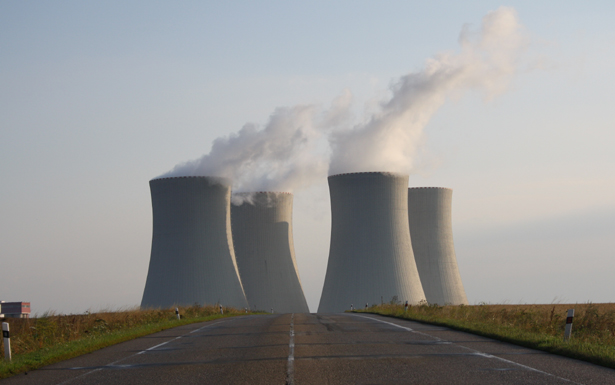Going Nuclear: Putting Some Media Coverage Into Perspective

Note: This is a guest piece written by Steve Skutnik, a Ph.D. candidate in nuclear engineering at NC State. Among other things, Skutnik is a regular contributor to the nuclear engineering blog The Neutron Economy, where a version of this post originally ran.
In times of crisis, mainstream media can make mistakes – particularly when the crisis involves complex science and technology, as is the case with concerns regarding Japan’s nuclear power sector. While these mistakes may be predictable – even understandable – they need to be addressed.
For example, there’s syndicated columnist Anne Applebaum, someone not normally given to fits of hyperbole, with this: If the Japanese can’t build a safe reactor, who can?
Where exactly does one begin with this premise? That somehow, the fact that there is a problem given the fact that these reactors withstood an earthquake well beyond the design basis – one of the largest earthquakes in recorded history – along with a massive tsunami, somehow “demonstrates” that nuclear energy is categorically “unsafe?”
As they say in the infomercials however, “but wait, there’s more!” Applebaum continues:
Increasingly, nuclear power is promoted because it is safe. Which it is – except, of course, when it is not. Chances of a major disaster are tiny, one in a hundred million. But in the event of a statistically improbable major disaster, the damage could include, say, the destruction of a city or the poisoning of a country. The cost of such a potential catastrophe is partly reflected in the price of plant construction, and it partly explains the cost overruns in Finland: Nobody can risk the tiniest flaw in the concrete or the most minimal reduction in the quality of the steel.
But as we are about to learn in Japan, the true costs of nuclear power are never reflected even in the very high price of plant construction. Inevitably, the enormous costs of nuclear waste disposal fall to taxpayers, not the nuclear industry. The costs of cleanup, even in the wake of a relatively small accident, are eventually borne by government, too. Health-care costs will also be paid by society at large, one way or another. If there is true nuclear catastrophe in Japan, the entire world will pay the price.
A few problems here. First, “the destruction of a city or the poisoning of a country”? A reminder that bears repeating: not one single person was killed due to Three Mile Island. None. And so far, the only person killed as a direct result of Japan’s reactor accident has been a crane operator – and this was due to the earthquake, not the reactor itself. And why is that? Because nuclear engineers take the job of safety very, very seriously. Reactors are designed with multiple barriers against radioactive release in order to prevent the dire consequences Applebaum refers to. Every reactor in operation right now in the United States and Japan has multiple systems to prevent radioactive release, unlike the Chernobyl system which Applebaum undoubtedly refers to.
Furthermore, in the United States at least, the cost of waste disposal is not paid for by the government. Each utility pays a fee ($0.001 per kilowatt-hour of electricity generated) into a waste disposal fund – and has since the 1980s. This fund has accumulated over $30 billion – of which, less than half has been spent on the (now-defunct) Yucca Mountain repository. One can argue that these costs are picked up by ratepayers, but certainly not taxpayers writ large.
And as for health care costs? Look at the numbers for premature deaths due to every other energy source, particularly for coal, oil, and others. (Even “green” energy sources have their own costs, from toxic waste generated to manufacture semiconductors for solar cells to the environmental impacts associated with constructing and operating wind turbines). The basic story here is simple: there is no “free lunch,” and there is certainly no “risk free” form of energy. The best we can do is weigh the relative risks and benefits appropriately.
Of course, Applebaum’s column looks positively benign compared to this piece by Patrick Doherty posted on CNN, originally titled “America needs a path to disaster-free energy.” (CNN has since updated the title, although one can catch a hint of the original in the URL.)
There is nothing wrong with differing points of view, but there is something deeply disturbing about exploiting tragedy in order to promote a particular agenda.
- Categories:


